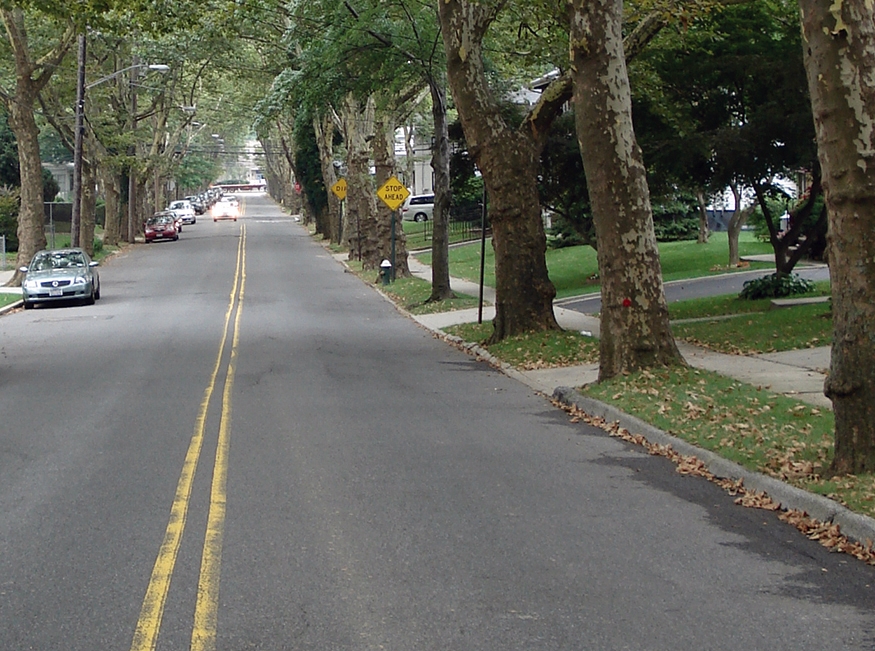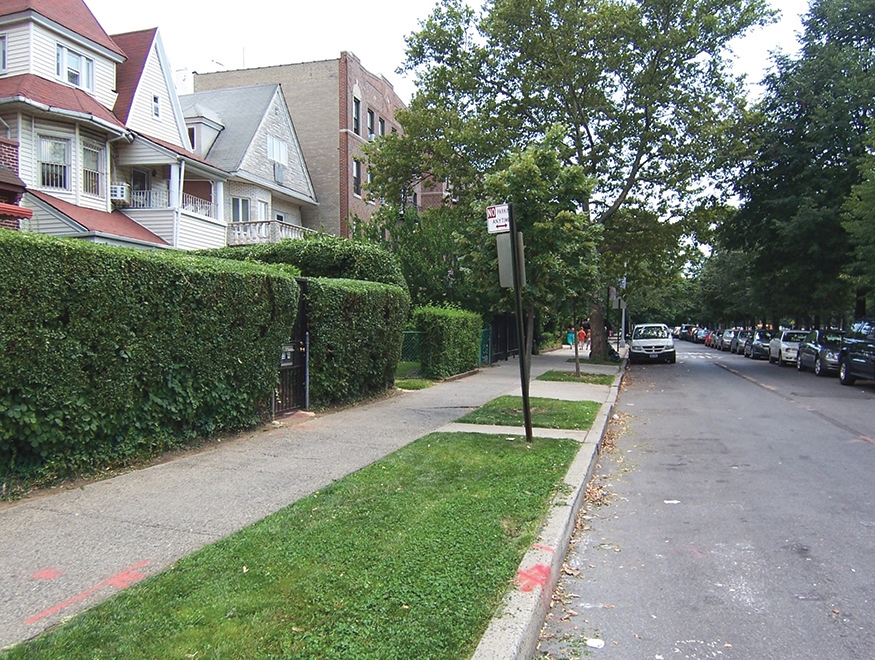Ribbon sidewalks allow for planting along the curb. They typically occur in more residential areas with low-volume pedestrian traffic. The planting strip generally consists of trees and turf grass, but can also provide an opportunity for enhanced ornamental plantings.

Ribbon sidewalk with turf grass and trees. Trees can be very large due to expanded rooting area afforded by adjacent lawns: Bancroft Avenue, Staten Island (Credit: Parks)

Ribbon sidewalk with lawn planting strip and trees. This configuration is common in lower-density residential areas and generally supports larger trees: Ocean Parkway, Brooklyn
Benefits
See Benefits of Plantings in the ROW in the Introduction
Considerations
- May impact underground or overhead utilities
- Consider environmental and physical stresses plants must withstand, including drought/inundation, sun/shade, heat/cold, wind, compaction, garbage, and animal damage
- Planting strips adjacent to ribbon sidewalks must be planted with groundcover vegetation for erosion control if a Stormwater Management Practice is not used
- The adjacent property owner or other maintenance partner is responsible for maintenance of any plantings, including lawn, other than trees
Design
See design guidance for Tree Bed
- Groundcover other than turf grass is encouraged as long as adequate access every 20 feet via walkable vegetation or another accessible surface is provided from the roadway
- Consider the capture of stormwater runoff. See Stormwater Management Practices
- Select low-growing plants that will have year-round ornamental interest
Plants
See Plant Finder

